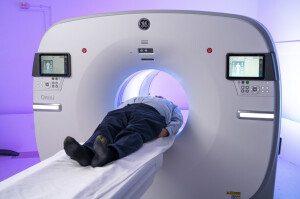by
John R. Fischer, Senior Reporter | June 23, 2023

GE HealthCare, St. Joseph's and the Lawson Health Research Institute are creating Canada's first Center of Excellence for Molecular Imaging and Theranostics. (Photo courtesy of St. Joseph's)
Through a new partnership with GE HealthCare, teaching hospital St. Joseph’s Health Care London, in Ontario, and its research component, the Lawson Health Research Institute, will form Canada’s first Centre of Excellence for Molecular Imaging and Theranostics (MIT).
The center will develop theranostics best practices for MIT, which combines medical imaging and radiotracers that can diagnose and treat cancer and other diseases without damaging healthy tissues, with an eye on making treatment more accessible.
Here are three things you need to know about the new center:



Ad Statistics
Times Displayed: 365804
Times Visited: 7089 Quality remanufactured Certified Centrifuges at Great prices! Fully warranted and backed by a company you can trust! Call or click for a free quote today! www.Centrifugestore.com 800-457-7576
Will be a training hub for imaging
St. Joseph’s will be a central location for training clinicians in advanced imaging technologies, exploring potential applications for PET/CT, developing treatments for various cancers and diseases, and organizing hospital services to maximize access.
GE HealthCare will install its first all-digital Omni Legend PET/CT System,
unveiled in October 2022, at St. Joseph’s in September 2023 to perform exams faster, produce more detailed images, and deliver radiation at lower doses.
"Additional equipment and radiopharmaceuticals are still to be determined, and will adhere to all applicable public procurement processes," Mike Hamilton, president of GE HealthCare Canada, told HCB News.
Create building blocks for future theranostic centers
The center will initially focus on prostate and neuroendocrine tumors, and expand to breast, pancreas, lung, and brain.
Researchers will develop best practices for expanding production and increasing access to radioisotopes, expanding on previous ones
published by the Society of Nuclear Medicine and Molecular Imaging and other organizations. They will also research integrating digital technologies to improve image quality, dose calculation, care coordination, and clinical operations, and how clinicians and government can make it easier to adopt theranostics.
"Radiotheranostics is based on the specificity of the targeting molecule and tumor-killing efficiency of the beta or alpha particles. The latter aspect could potentially make the treatment be effective even with very low target concentration in the tumor," Dr. Ting-Yim Lee, director of PET/CT research at Lawson and medical physicist at St. Joseph’s, told HCB News.
Fostering collaboration
To increase MIT access in Canada, the Imaging Research Group at Lawson, also co-owned by the London Health Sciences Centre (LHSC), will use the PET/CT scanner in its research, alongside Western University.
The researchers say challenges include lack of a validated method for personalizing internal radiation dose, therapeutic radioisotopes, real-world evidence on cost-effectiveness, molecular imaging methods to show early treatment responses, and understanding of radiobiology of beta versus alpha particles for cancer treatment, as well as delayed adoption by payers for reimbursement in publicly-funded health systems.

